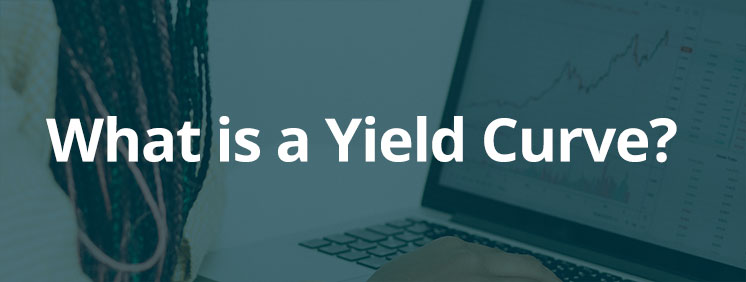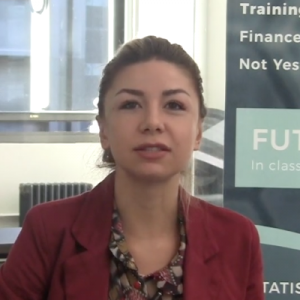
Whether you’re a seasoned investor or are just starting, understanding data points related to the economy is the best way to ensure success. One of these data points involves the interest rates of savings bonds. Due to their stability, following the outlook for bond interest rates can tell you what to expect for the short term and long term with all investments.
Thankfully, no one expects you to do this complicated work yourself! Economists take these data points to create yield curves that streamline your research work and make it easier to understand where the economy is now and where it might be going later.
But what is a yield curve, and what can it tell us about the economy? That’s where we come in. This article will give a basic overview of a yield curve and what it can tell you. Plus, when you’re ready for a deeper dive, we’ve got a great next step to take. Let’s dive in.
What is a Yield Curve?
Savvy investors manage their investments based on risk. While there are many ways to assess levels of risk in the marketplace, the most reliable across the board is the performance of bonds.
Plotting the performance of bonds can get complex thanks to maturities, interest rates, and historical performance. Luckily for us, there are yield curves to blend all of these data points together. Yield curves are visual reports that show how bonds are performing based on maturity and interest rates. Since bonds are often seen as the safest investment since the U.S. government backs them, these curves are a reliable way to predict economic health going forward.
The Three Types of Yield Curves
The U.S. Treasury releases yield curves in three-month, two-year, five-year, 10-year, and 30-year segments every trading day around 6:00 pm EST. The yield curve you’ll see for each element is based on factors that contribute to the overall debt in the marketplace like mortgage interest rates, interest rates charged by banks for loans, etc.
While the data differs for each reporting period, the curve will fall into one of these three categories:
Normal Yield Curve
Normal yield curves typically show economic growth over a period of time. Based on these plotted data points, seeing a normal yield curve means that you, as the investor, should expect increased yields on long-term bonds.
Normal yield curves are the most common to see as bonds typically have sustained stable growth, especially for 15+ year bonds.
Seeing a yield curve with a steep curve means that investors should expect a period of vast economic growth. That’s the good news. The bad news is that steep curves are also a signal of impending inflation and higher interest rates.
Flat Yield Curve
Flat yield curves are often the predecessor to an inverted curve as they signal bond yields have little expected growth before they maturate. This can be good for short-term bonds as it may signal a potential uptick in rates but overall is bad news for long-term bonds. Flat curves can also have small “humps” in the curve showing slightly higher yields for shorter-term bonds under two years.
Seeing a flat yield curve signals that the economic outlook is uncertain or if the central bank is expected to raise interest rates.
Inverted Yield Curve
Last but certainly not least is the inverted yield curve. When the data shows a downward slope, short-term interest rates will be more profitable than long-term. This typically happens during periods of economic recession when investors have a wary outlook on the long-term yields for bonds.
The good news is that inverted yield curves are rare to see, thanks to the steps taken during a flat curve projection. However, seeing an inverted curve can almost guarantee an upcoming recession and should not be ignored.
Ready to Take the Next Step?
While this was just a brief overview of yield curves, we hope it’s enough to help begin your education into the Treasury and its impact. For further training, register for the next Fixed Income Professional Certificate sessions. Held both in-person and online, this certification will teach critical fundamentals like understanding interest rates, determining fair values and risk measures, and other skills to get you desk-ready. If you’re looking for a well-rounded financial understanding to help grow your portfolio, this certificate is the best investment you can make.
Related Courses: Fixed Income Professional Certificate
Develop a complete set of desk-ready skills for fixed income market participants. You will learn how to determine fair values, yields and risk measures for a wide variety of instruments including government bonds, corporate bonds, mortgage securities and fixed income derivatives. Understand the structure and trading conventions of fixed income markets, and learn how to construct, interpret and trade the term structure of interest rates.

Doriana
October 2018, Fixed Income Professional Certificate
“The Fixed Income Professional Certificate was very valuable for me to deepen my knowledge in Fixed Income, especially because we invest a large part of our portfolios and reserves into Fixed Income instruments such as treasury bills or bonds from different corporations.”
About The New York Institute of Finance
The New York Institute of Finance (NYIF) is a global leader in professional training for financial services and related industries. NYIF courses cover everything from investment banking, asset pricing, insurance and market structure to financial modeling, treasury operations, and accounting. The New York Institute of Finance has a faculty of industry leaders and offers a range of program delivery options, including self-study, online courses, and in-person classes. Founded by the New York Stock Exchange in 1922, NYIF has trained over 250,000 professionals online and in-class, in over 120 countries.
See all of NYIF’s training and qualifications here.





